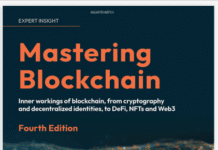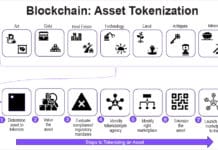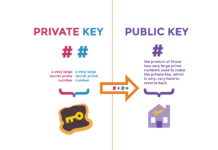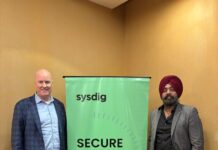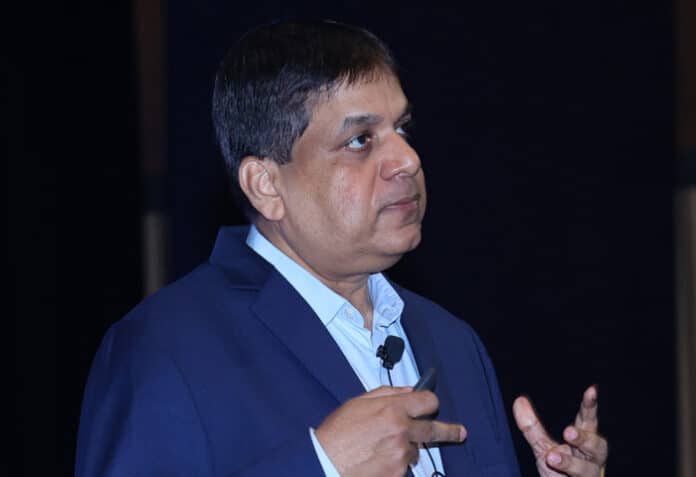Open source is crucial for cost reduction and accelerated delivery of tailored solutions to meet market demands. At OSI 2023, OSFY’s Yashasvini Razdan got a chance to speak to Dr Biswajit Mohapatra, Head, Customer Solutions at Amazon Web Services, who spoke about how open source empowered businesses with flexibility, experimentation, and agile methodologies for genuine customer satisfaction.
Q. What AI/ML opportunity do you see in India?
A. According to India’s NASSCOM report, the country’s GDP is predicted to be US$ 5 trillion by 2025. The GDP from AI and data will be around US$ 500 billion, which means that almost 10% of this entire US$ 5 trillion GDP will come from AI and data. Around 45% of this 500 billion will be used by India’s finance, retail and agriculture industries. AI/ML is pervasive across every nook and cranny of India, from large banks and insurance companies to remote rural places. So that’s the opportunity that India is offering.
Q. How has the adoption of open source technology grown across different industry sectors in India?
A. India is the fastest growing country in the world in terms of open source adoption. There is increased adoption of open source use cases across the fintech, insurance, healthcare, retail and agriculture industries. I would have expected the banking and telecom domains to have greater leverage of open source, but that’s probably a little slower. However, other industries like media and entertainment have really picked up open source adoption.
Q. As a community leader, how do you encourage developers to adopt open source across businesses?
A. In today’s business landscape, every customer demands accelerated delivery at a reduced cost, making it a critical aspect of our engagements. Failing to meet these expectations means someone else will step in. Open source allows us to lower costs, accelerate delivery, and tailor solutions to fit specific use cases to meet the fast-paced demands of the market. It also provides the flexibility for the community and users to experiment, iterate faster, and embrace agile methodologies. The third advantage stems from the democratisation of technology. In the current landscape, every company is essentially a tech company — even entities like banks today are tech companies with a banking licence. Open source becomes integral in this scenario, enabling companies to stay technologically competitive.
Q. How can the balance between data security and open source be maintained?
A. Attacks are happening faster than one can respond. How we put in the right mechanism to make open source software resilient plays a significant role in eliminating vulnerabilities before attackers can exploit them. We must have proper guardrails to manage data in transit, data in use, and data at rest. Open source never compromises on data privacy. So many techniques, cryptography, etc, can be brought into focus through open source. For instance, in the context of cloud and open source, cryptography is employed, but the efficacy of cryptographic algorithms is not foolproof. Consider a scenario where an individual begins selling personal information online. Without proper guardrails, someone observing this activity could extract and potentially misuse that information. Collaborative efforts within the industry and the open source community, or even at an individual level, are needed to establish effective guardrails that prevent unauthorised extraction of personal information. It’s important to harden your security posture, manage risk and compliance, and automate governance processes to ensure open source data security.
Q. But with the influx of information, isn’t it easy to break through these guardrails?
A. Indeed, obtaining information on virtually anything has become quite effortless today. This is where responsible AI plays a crucial role – in implementing the proper guidance and mechanisms to maintain a balance. Another consideration is the ability to redact information and ensure that I have all the information while creating a bubble around it so that it is not easily accessible to any unauthorised or malicious entity. For instance, one might have various contact numbers and other details available, but it’s vital to establish guidelines to prevent the disclosure of all information. The information can still be accessible, but it remains within a defined bubble, ensuring that the linkage between different pieces of information is restricted and not readily available to external entities.
Q. With the increasing reliance of Indian startups on open source systems and the community’s growth, who holds the responsibility for putting up these guardrails?
A. The community is growing, and adoption is a good sign. But at the same time, it’s a shared responsibility that extends beyond mere coding, especially when placing data in the cloud or utilising open source. Simply assuming the cloud provider’s systems will handle everything is not accurate. Being an equal stakeholder in managing and monitoring is very important. Sometimes, clients believe that once data is on the cloud, the cloud provider secures everything, but so many things go on within the application. Neglecting these areas compromises actual security. This is not exclusive to open source; it involves culture and mindset. Everyone, whether an individual or a company, needs to adopt the same responsibility model. We have been on a 100-year journey in open source and yet we are still at the tip of the iceberg. It will only grow; there is no finish line for open source, whether physical or technological.
Q. How does a company harness the power of open source to generate revenue?
A. Anyone can use open source technology. Take, for instance, ad-tech which is utilised to attract users. That, in itself, will generate revenue. Selection of the right open source solutions, focus on compatibility and integration, implementation of right security measures, and robust update processes need to be ingrained into business to leverage the power of open source and generate revenue. Today I can provide a differentiated value proposition to business through open source software integration.
Q. What should businesses engaging with open source prioritise – profitability or open innovation?
A. The primary focus should always be customer satisfaction, which inherently leads to financial success, regardless of the technology used. For finding the right player, open innovation opportunities are a must. Customers often appear content but are inherently dissatisfied and crave for more value. It is of paramount importance to leverage open innovation opportunities to provide richer customer experiences.
Q. How can a company effectively manage innovation, brand positioning, market presence, and technology stack within their overall workflow and architecture?
A. Today, to make businesses successful and drive differentiated value propositions, experimentation is critical. Open source technology plays an important role in providing opportunities for experimentation, democratising the process, and making it more iterative and pervasive. The rapid evolution of technology, especially in the cloud and open source domain, has accelerated experimentation.
Architectures are designed with cost optimisation in mind, reflecting customers’ changing priorities. The contemporary customer introduces four dimensions of cost in the context of providing cost optimisation services. The first dimension revolves around measurement, billing, and accounting. The second focuses on sales and exploring avenues for cost optimisation. The third dimension is centred on planning, involving forecasting and future-oriented design. Creating a culture and framework for cost-optimised operating models constitutes the fourth dimension. All these things are feasible and more streamlined due to the widespread adoption of open source technologies, which seamlessly connect with industry trends.
Q. How do companies gauge what open source libraries to utilise?
A. This is a critical question, and as mentioned earlier, certain aspects need attention quicker than specific products. Regarding credibility and usage, consider a scenario where I employ a pre-existing model from a third-party foundation as part of my services. If that model doesn’t align with my compliance requirements, it must be customised to meet those specific business needs. While open source technology is valuable, it’s essential to recognise that it may not always perfectly fit my compliance and customer service requirements. Therefore, a nuanced approach is necessary to address the dynamic aspects that come to life in this context.
Q. Who assumes responsibility for maintaining the updates from the third-party open source library, software usage, and regular updates?
A. Navigating through the organisational vision due to the internal management of open source libraries demands establishing appropriate policies and procedures. As you rightly pointed out, determining who manages the updates is the challenge. We must implement an education mechanism and specific policies to ensure that the tools used align seamlessly with the organisation’s project goals. Without the right guidance, policies, and procedures, there’s potential for trouble. Drawing the line in this context is crucial, and this is where partnerships play a pivotal role. Open source service providers, like the community village, offer valuable assistance, aiding organisations in carefully delivering and integrating updates. While this might be somewhat complex, the best defence today lies in having well-defined policies and procedures within the organisation and forming a structured process.
Q. What strategies can be employed to select licences for open source systems to maintain openness while preventing misuse or exploitation?
A. There are a lot of rules around licensing technology. There is no one-size-fits-all licensing strategy in the open source world. There are two main types of open source licences – permissive and copyleft. The latter specifies how the open source software can be used, modified and distributed. I’ve also seen open source code generation tools using line-of-code-based licensing models. Yet, challenges arise when code analysis breaks down or when making the tools available to users on their platform of choice. There are also flexible licensing models where options like user-level or usage-based pricing strategy are followed catering to users’ varying needs, whether they’re part of a large enterprise or individuals working from a local coffee shop. There’s no universal answer for licensing, but there is a definite need to formulate strategies that can be standardised across the community.
Q. How does AWS leverage open source AI/ML solutions?
A. AWS is a proven leader in AI/ML solutions and can help solve real world business problems in any industry. Organisations can innovate with confidence by building on 20+ years of experience at Amazon. AWS AI/ML solutions increase productivity of data scientists multi-fold, who can now focus their efforts on improving customer experiences, optimising business processes and accelerating innovation. In short, it helps them create impactful solutions faster. You can use ready-made, purpose-built AI services, or your own models with AWS ML services. This can be used to create more intelligent contact centres, detect fraud and personalise user experiences, and much more. We unlock the potential of GenAI by offering the most performant infrastructure for it with the flexibility to build your own foundation models, and by making GenAI powered applications available on AWS cloud.





